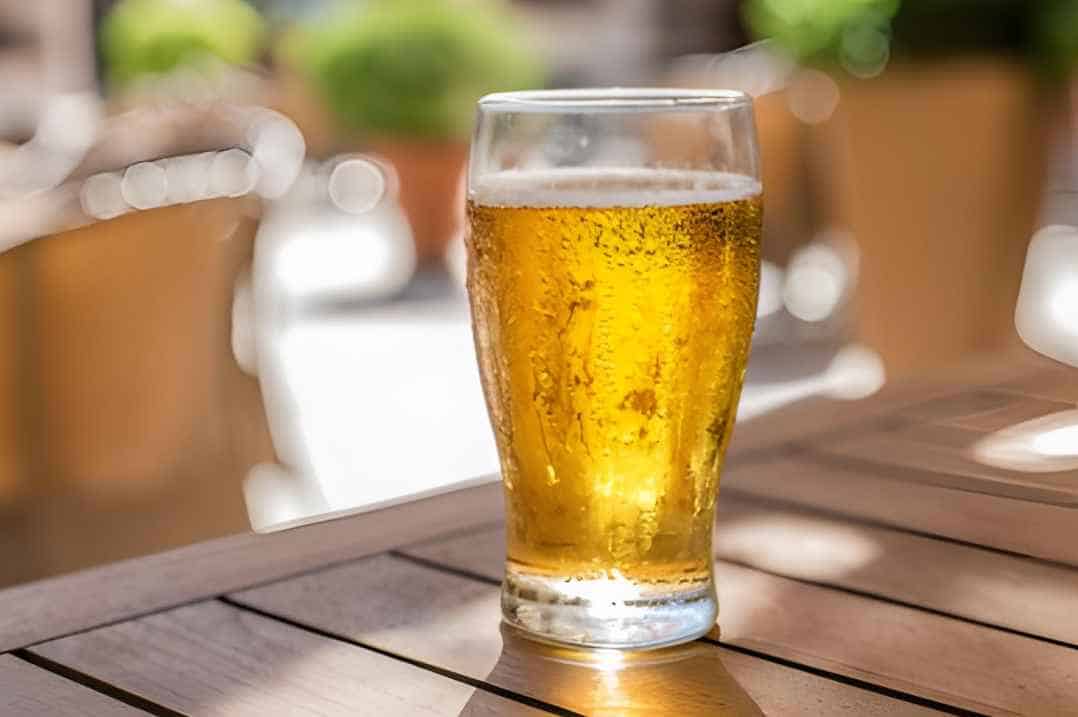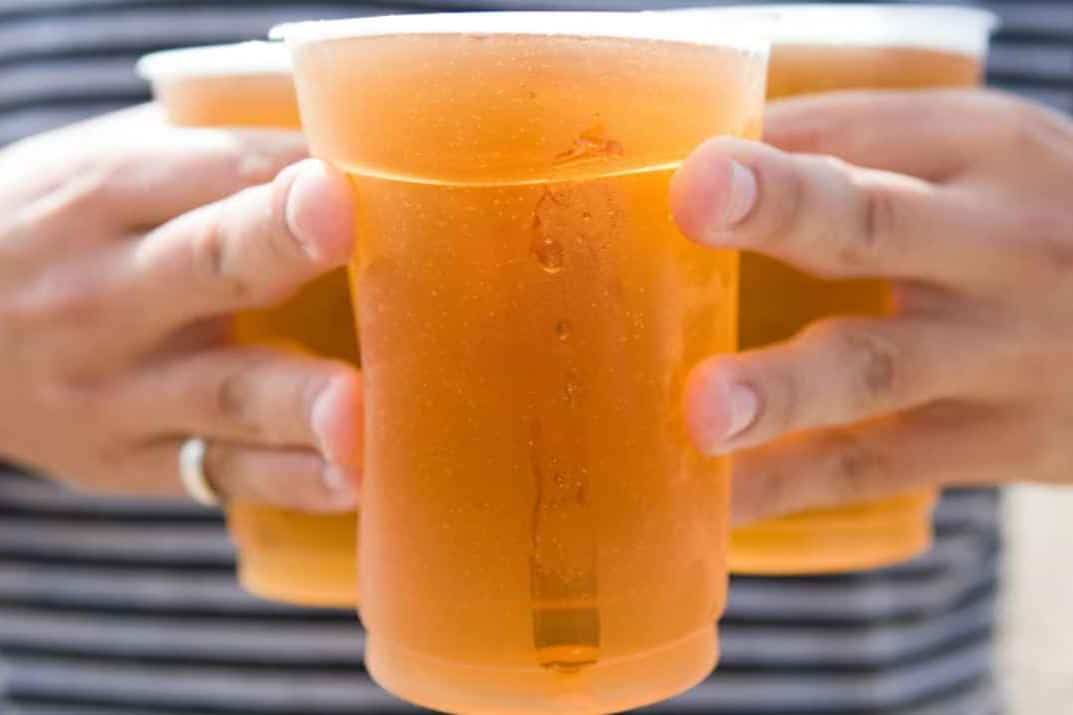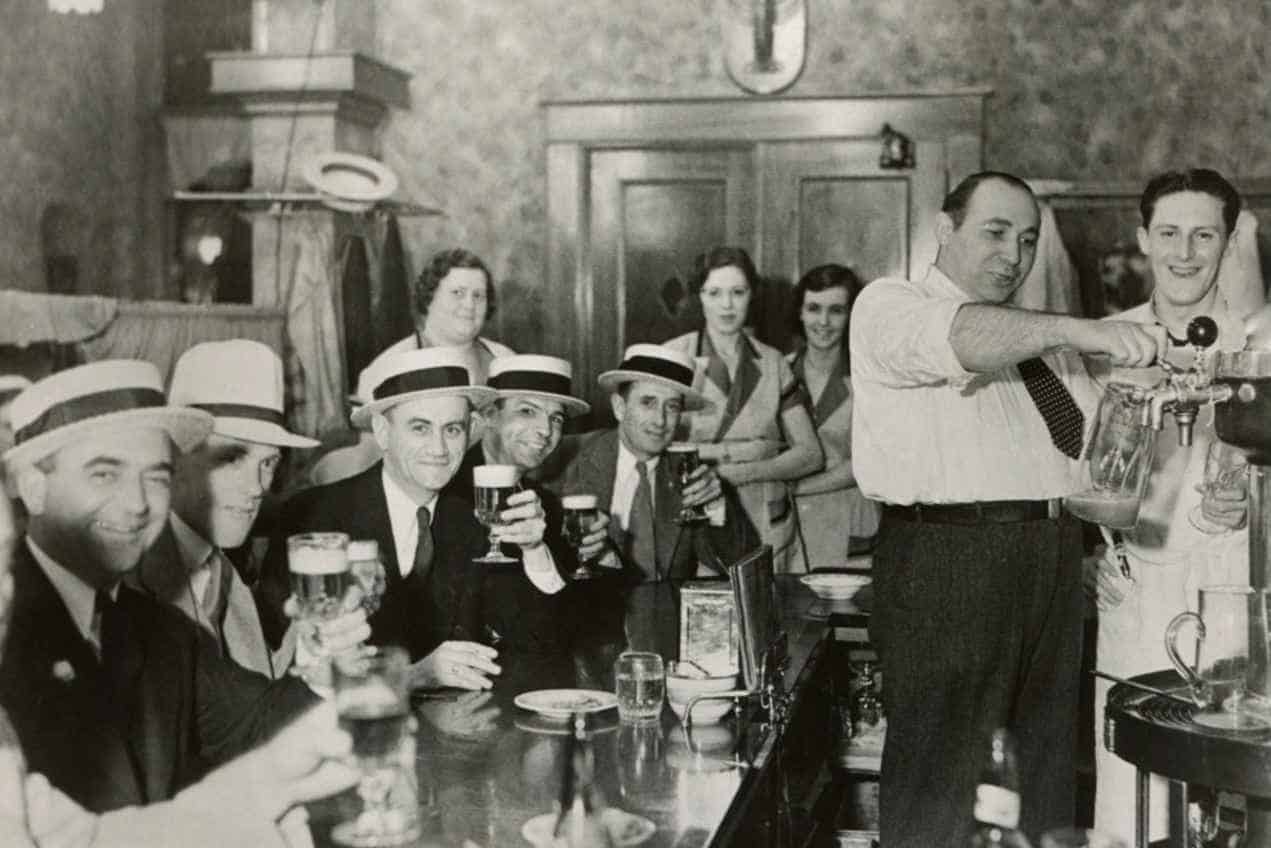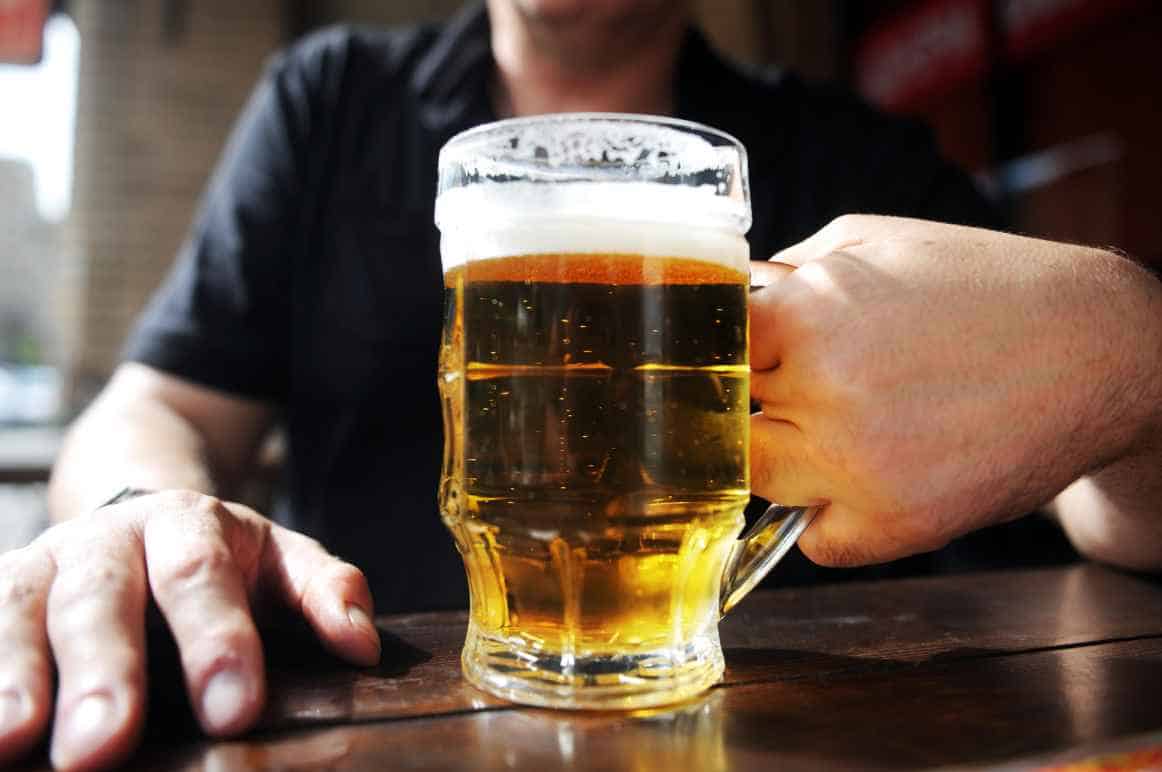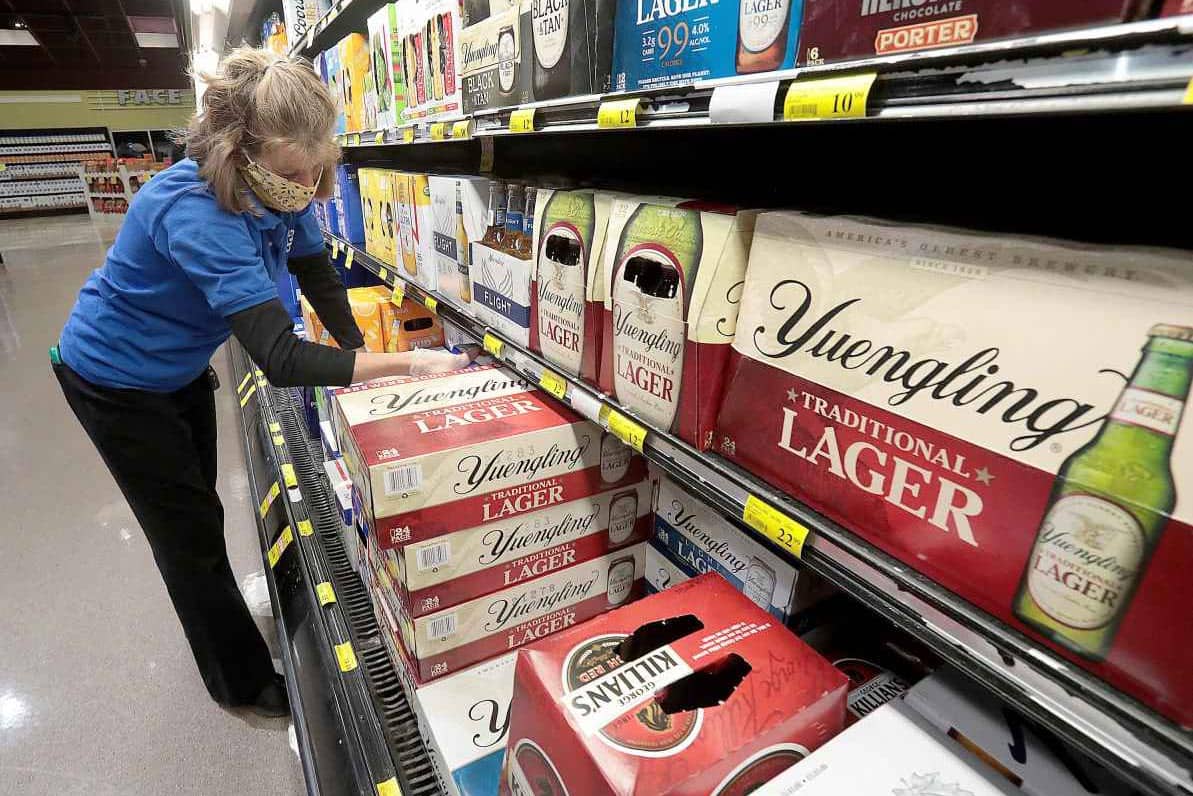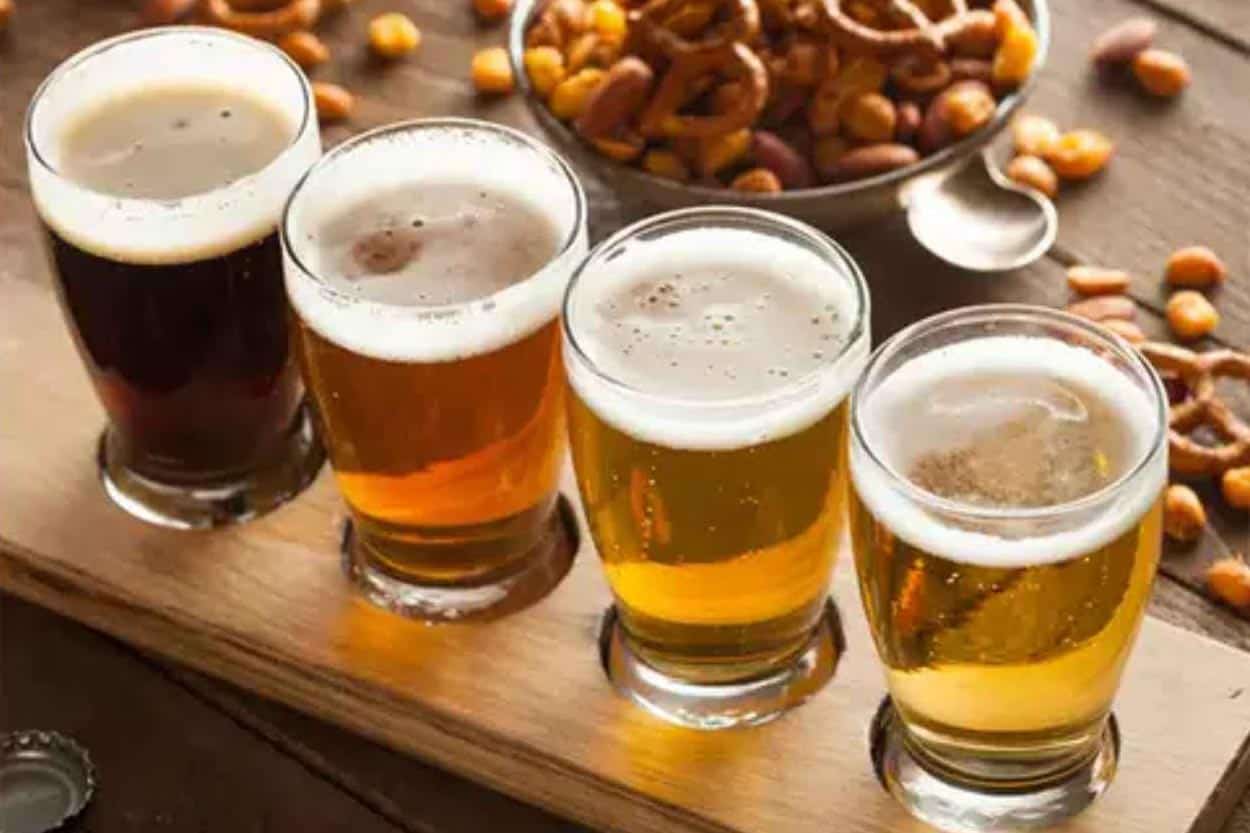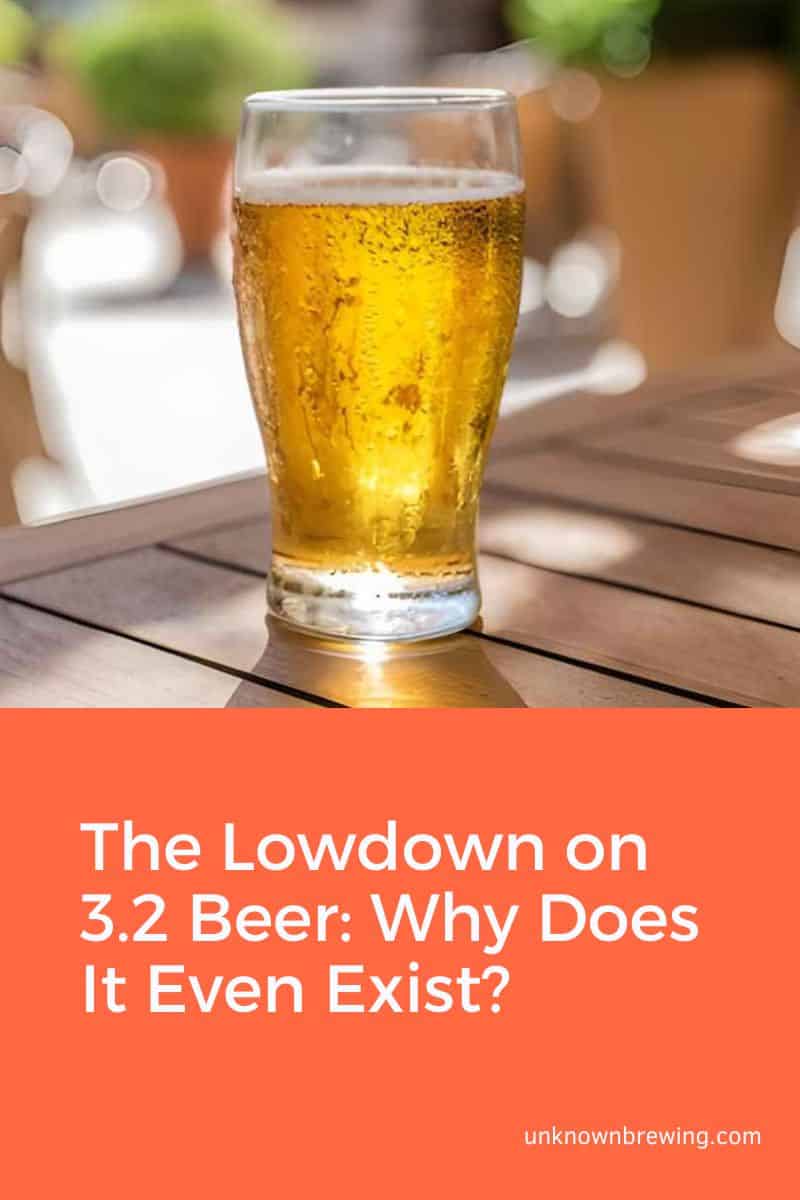Throughout history, there have been different forms of less alcoholic beer. In Mid Evil times, weak beer was a safer option than water, which was killing people due to contamination. Fast forward to the 1930s, and 3.2 beer became a thing after Prohibition. So, What is 3.2 Beer?
The 3.2 beer contains 3.2% alcohol by weight or 4% alcohol by volume. Launched in the ‘30s, 3.2 beer is also called three-two beer or low-point beer. By alcohol content, 3.2 beers are lighter than regular beers (5% alcohol by volume)
This article will discuss 3.2 beer, its history, and how it compares to other beers. But first, What is the 3.2 beer?
What is 3.2 Beer?
3.2 beer is a term that caught on in the 1930s. It describes beers that contain 3.2% alcohol by weight (ABW) or 4% alcohol by volume (ABV). By other names, 3.2 beer goes by three-two beer, light beer, or low-point beer. Due to its low alcohol content, 3.2 beer contains fewer calories than 5% ABV beers.
3.2 beer has a lower alcohol content in comparison to other beer styles. If you’re looking to drink but not get drunk, 3.2 beer is perfect for you.
Benefits of 3.2 Beer
In terms of alcohol content, 3.2 beer is a weak drink. As a result, a stigma has developed around the low-point beer. Some people buy them because they don’t have a choice, while some (especially tourists) buy them because they don’t know it’s 3.2% ABV.
However, 3.2 beer has its benefits. Below are some merits of 3.2 beer:
- 3.2 beer is cheaper than stronger beers
- 3.2 beer is sold everywhere, including grocery stores
- 3.2 beer has a lower calorie density
Why Does 3.2 Beer Exist?
To understand what 3.2% beer is, you need to understand the chain of events that led to its existence. Join us as we walk down the halls of history to demystify the 3.2 beer.
The Prohibition Era
It’s 1919, and temperance movements have convinced Congress of “the evil in alcohol.” The result is the ratification of the 18th amendment by Congress. This amendment bans the production, sale, and consumption of booze. Multiple breweries and distilleries shut down as the country enters the Prohibition Era.
The Prohibition Act of 1919 empowers the federal government to crack down on non-compliant. As it becomes apparent that government lacks the resources to police the newly out-lawed alcohol industry, a new class of criminals arises; the bootlegger.
Bootleggers would supply moonshine to the black market. As the ‘20s roared, so was the rise of organized crime and gangsters like Al Capone. By the decade’s end, it then became clear that Prohibition had failed; rime was on the rise, and Americans were still drinking.
Video Source:
The Fall of Prohibition
Different temperance groups championed Prohibition for various reasons. Women’s groups blamed neglectful husbands and domestic violence on alcohol consumption.
Religious organizations believed alcohol abuse led to temptation and sin. Progressive labor activists were convinced that alcoholism harmed workers’ ability to organize.
By the late 1920s, it became evident that banning alcohol had not delivered the social improvements it promised. Instead, Prohibition led to corruption and the dawn of organized crime.
And with the start of the Great Depression in 1929, the federal government needed the tax revenue collected from alcohol sales. They proposed that lifting the ban on alcohol might stimulate the economy. And in 1933, Congress passed the 21st amendment, repealing the 18th amendment of 1919.
Even though alcohol production, sale, and consumption were now legal, several states continued to prohibit alcohol. These dry states included Arizona, Utah, Texas, Alabama, Montana, Oregon, Nebraska, North Dakota, and Mississippi.
The Rise of 3.2 Beer
Despite ratifying the 21st amendment, dry states continued their ban on alcohol. But as the years went by, they began loosening their restrictions. Some dry states passed laws to permit the production and sale of low-strength alcohol. But how do you define low-strength alcohol?
Many states rallied by the number 3.2. This figure came from Anton J. Carlson, the University of Chicago’s Physiology Department chairperson. In 1933 Mr. Carlson declared 3.2% ABW as the standard of non-intoxication. Meaning you could drink but still manage to walk in a straight line.
3.2 beer sales peaked in the 1970s. By 1969, the minimum drinking age in America was 21 years in 37 states. In 1971, Congress passed the 26th amendment to lower the national drinking age from 21 to 18.
Between 1971 and 1975, many states lowered their minimum drinking age from 21 to 18. And for the first time in many years, teenagers could buy alcohol. However, their choice of beverage was limited to 3.2 beers.
Between 1976 and 1983, several states started raising the minimum drinking age from 18 to 19, 20, or 21. Many states cited teenage drunk driving as a motivator.
In 1984, Congress took notice of the crisis and passed the 1984 National Minimum Drinking Age Act. Under the new law, all states had to raise the minimum age for purchasing and possessing alcohol to 21.
With the core consumer base of 3.2 beer gone, sales started to decline.
The Decline of 3.2 Beer
As more and more states ditch the 3.2% ABW cap, low-point beers are disappearing from grocery store shelves. Colorado, Utah, Oklahoma, and Kansas are the last states to scrap 3.2 beer. Convenient stores in these states can now sell full-strength beer on their shelves.
As of writing, Minnesota is the only state restricting convenience and grocery stores to 3.2 beer. For full-strength beer, find a state-licensed liquor store.
But the key driver toward the decline of 3.2 beer is its demand. Consumers are showing that they prefer full-strength beer over 3.2 beer through their buying patterns. In Colorado, for example, sales of 3.2 beer plummeted after the scaping of the alcohol cap. Craft beer sales, however, grew in the same period.
3.2 Beer vs. Regular Beer: What’s the Difference
Is 3.2 beer inferior to regular beer? Let’s explore.
Alcohol Content
3.2 beer is weaker than regular beer. While 3.2 beer has an alcohol content of 4.0% ABV, regular beers have about 5.0% ABV. Is the 1% ABV a huge difference? Not so much, but you’ll need to drink more bottles of 3.2 beer to catch a buzz.
Due to its lower alcohol content, 3.2 beer is ideal for light drinking. For example, 3.2 beer is the perfect lunch break beer. After your drink, you can get back to work still feeling sober. No wonder military bases stock up on 3.2 beer.
The low alcohol content of 3.2 beer also makes it an excellent substitute for beer lovers trying to reduce alcohol consumption.
Calorie Density
A beer’s calorie count depends mostly on alcohol content. Therefore, regular beer (5.0% ABV) contains more calories than 3.2 beer.
Below is a table comparing the number of calories per 12 FL oz in popular beer styles:
| 3.2 Beer (4.0% ABV) | Regular Beer (5.0% ABV) |
| Amstel Light: 95 calories | Odell Brewing Cutthroat: 145 calories |
| Carlsberg Lite: 102 calories | Holidaily Favorite Blonde: 161 calories |
| Labatt Blue Light: 108 calories | Taddy Porter: 186 calories |
| Brava Light: 112 calories | Sam Smith Oatmeal: Stout: 190 |
| Moosehead Light: 115 calories |
Conclusion
The failure of Prohibition and the Great Depression of the late ’20s forced the government to compromise its stance on alcohol production, sale, and consumption. 3.2 beer was that compromise. The regulation restricted beer strength to 3.2% ABW or 4% ABV.
Some states keep this law to this day. Minnesota, for example, doesn’t allow grocery and convenience stores to stock up on full-strength beers. 3.2 beer is inconvenient for those who want to get a kick from their beers.
However, it’s useful to people who want to sip but not get drunk. It’s helpful to those who are trying to cut down on beer or watch their weight. Maybe 3.2 beer will have a renaissance in the near future.

Sandra B. King is a wife and mother of two. The marketing genius is also a beer enthusiast. Even though she doesn’t brew beers, she can whip up a mean content marketing strategy.
